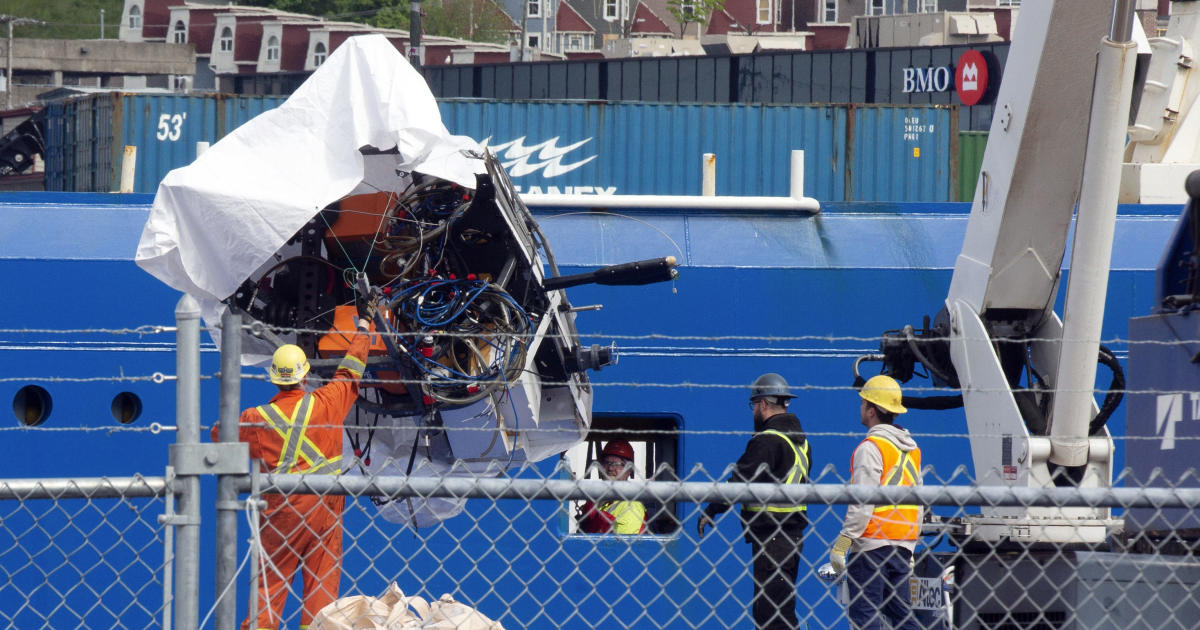I looked for videos of the unloading of the debris at the Canadian port. I had some observations. Note that the titanium end bells were separated from the titanium rings that were glued to the carbon fiber tube. Those 17 bolts that attached them appear to have severed during implosion. If you look at the acrylic window it has a small ring with bolts too that is missing. Sub sea pressure would have wedged the acrylic window in so the metal ring is only to hold it in till at pressure. I don't think the window failed first. With an implosion driven by the carbon tube failure there will be an "after shock" wave going back out after the original compression. A reflected wave, just like in an organ pipe. The after shock would have blown the window "out."
If you look closely at the groove in the titanium ring where the carbon fiber was glued you will see no evidence of either adhesive or carbon fiber. edit:was able to get a better video ... you see no evidence of carbon fiber but do see residual glue covering about 50% of the joint. If you do the calculations, the carbon tube would be classified as a "thick wall" cylinder. This is important, because a thin wall cylinder fails in buckling, but a thick wall cylinder fails in the compression members. That means it didn't buckle like stepping on a pop can, but "blew apart" when the compression surfaces "exploded" from the stress induced strain.
In our composite work, if the resin, aramid or carbon were a day over shelf life requirements they were scrapped. Reality though, those materials would be OK for a few days or weeks after that date. Depends how soon he got the materials and cured them. With time the polymers absolutely do degrade and need to be scrapped. I will bet Boeing will not be selling out of date carbon fiber anymore. (As a side note, in days past I purchased aluminum rod ends from a scrap dealer for my projects. I found some perfect shapes that were scrapped by an aerospace manufacturer in my area. The scrap dealer would not sell them to me, and said: "We must melt those down, that was our agreement with the company." This was to absolutely assure those parts did not make it back into the supply chain as grey market parts.)

 winknews.com
winknews.com

 winknews.com
winknews.com


:max_bytes(150000):strip_icc():focal(999x0:1001x2)/titan-debris-recovered-062823-tout-8675c6070eb34bffa700183aae66cbe7.jpg)

